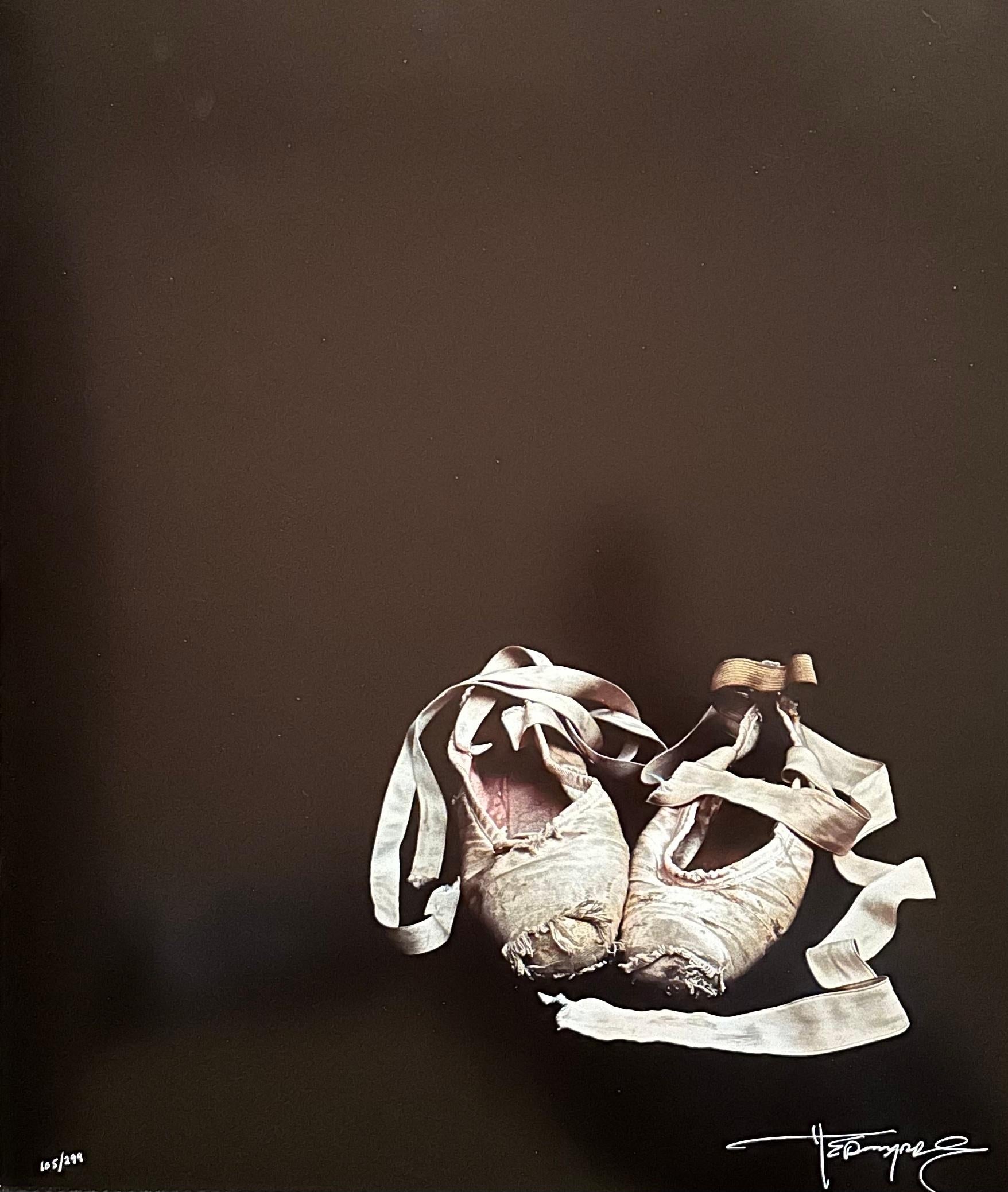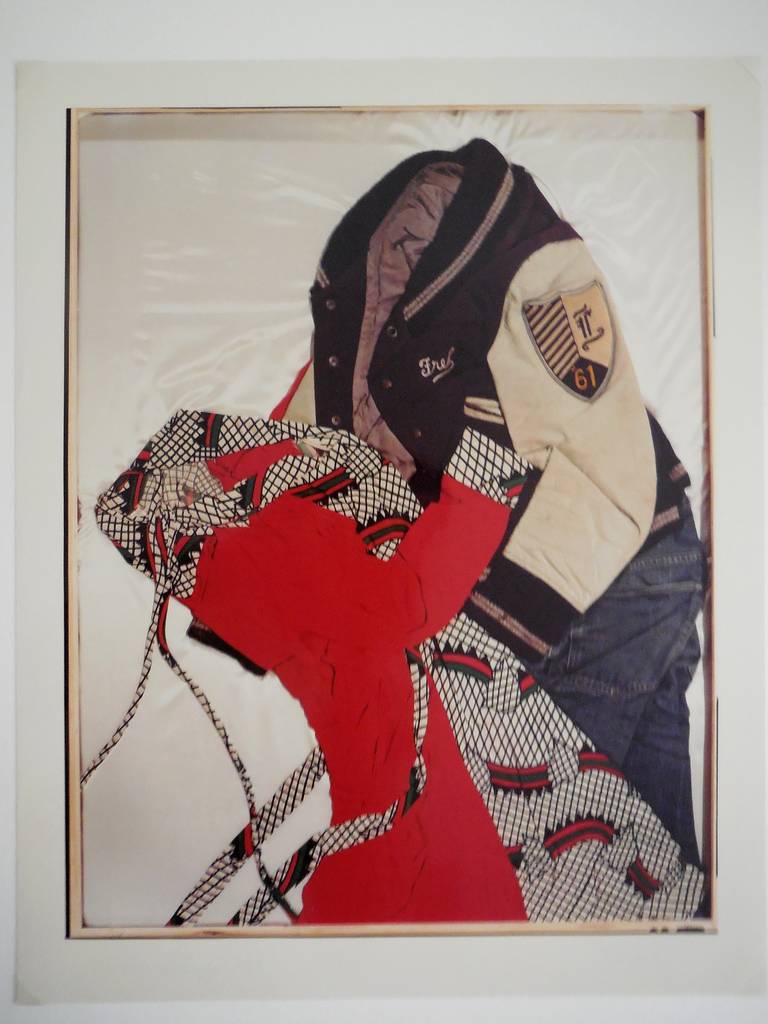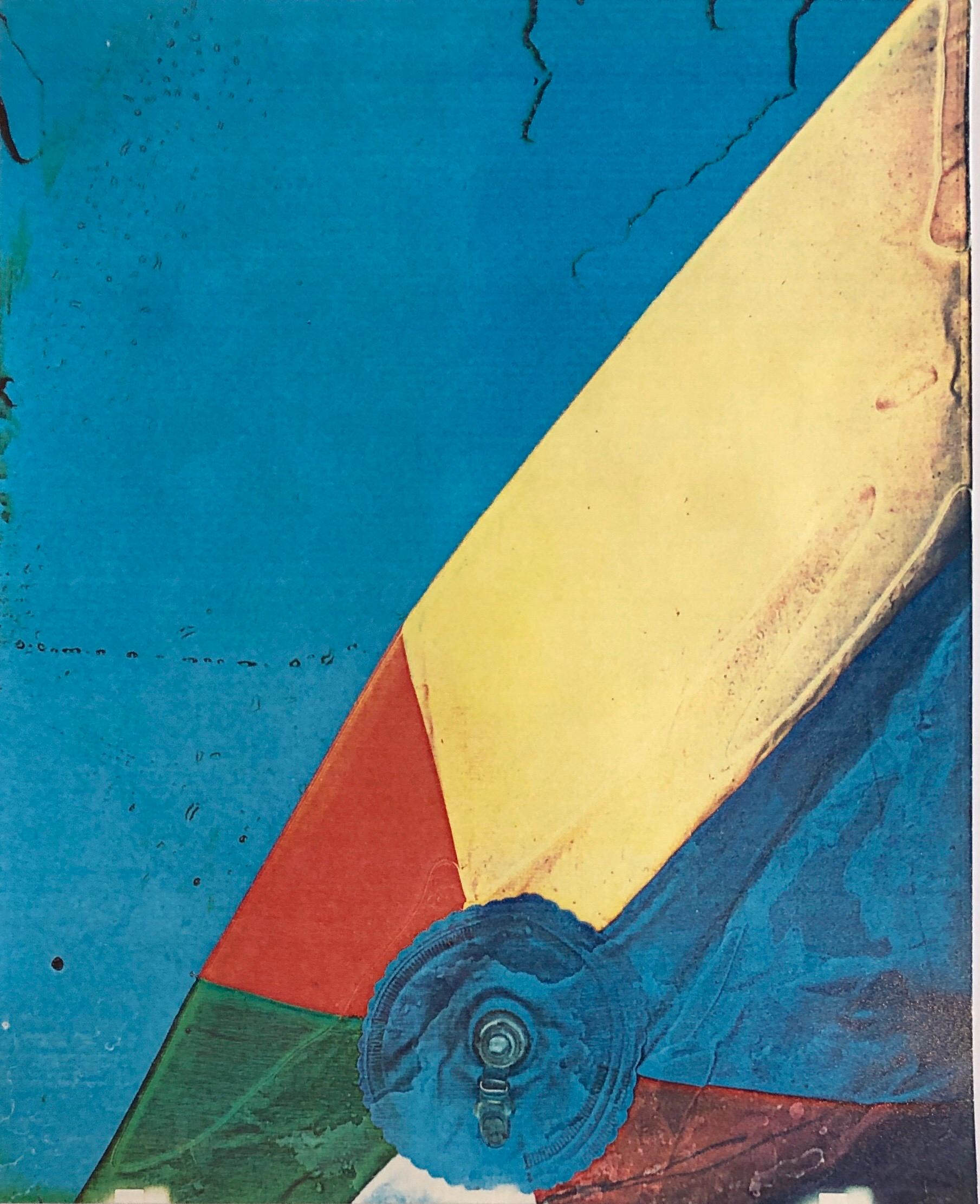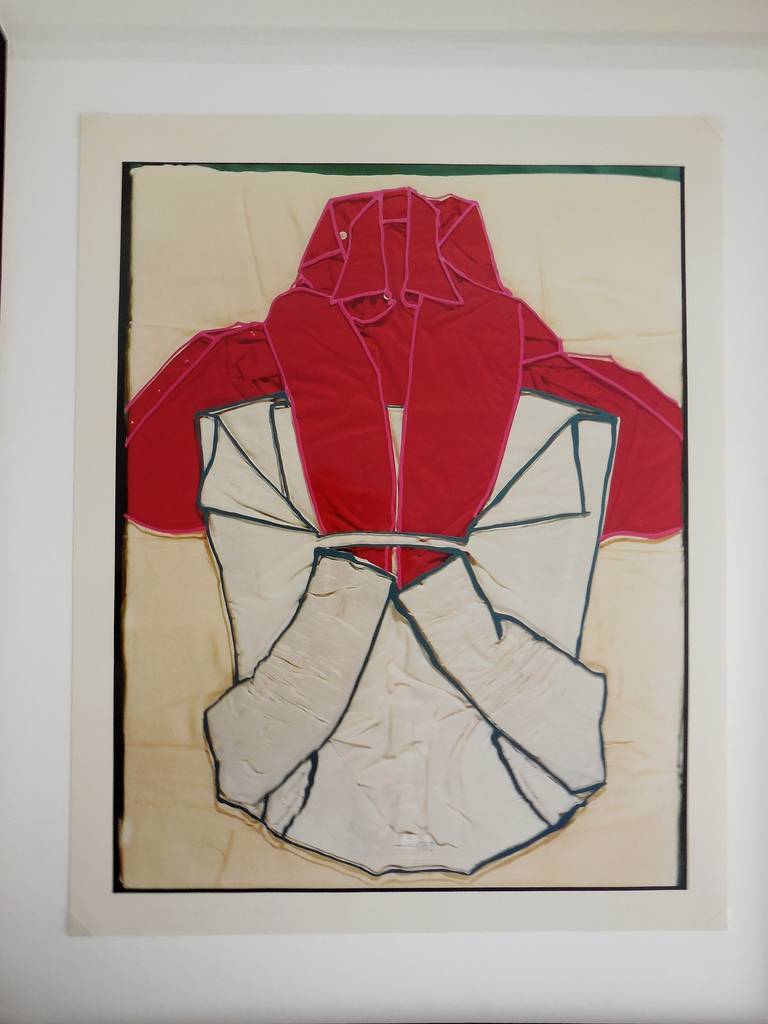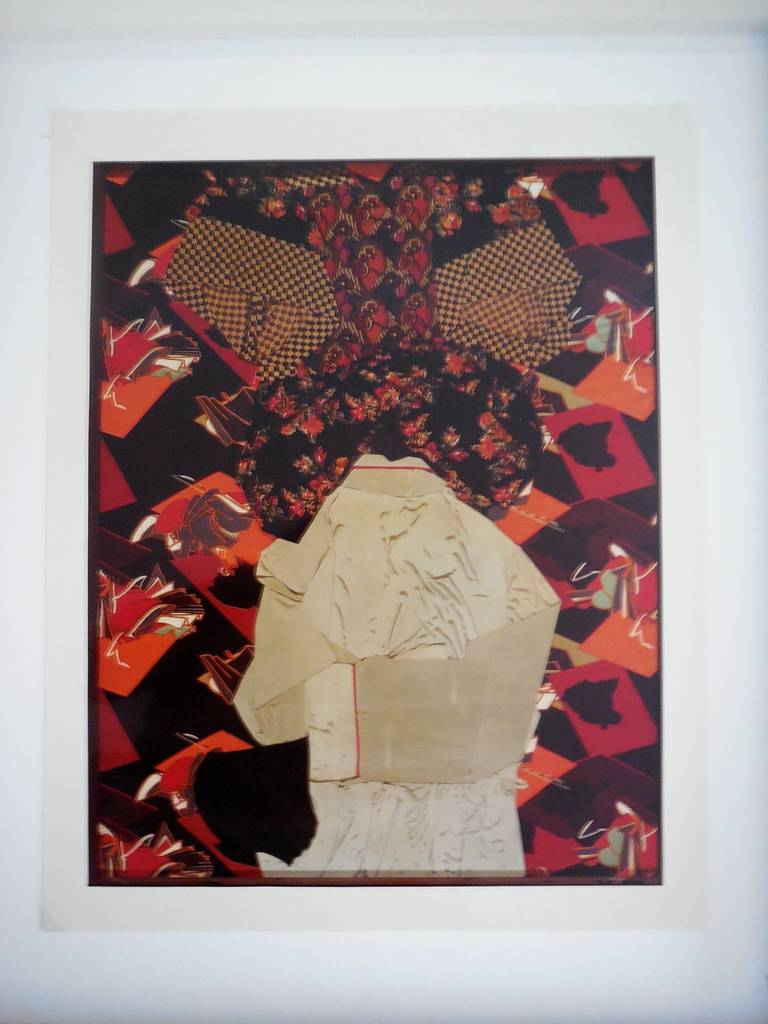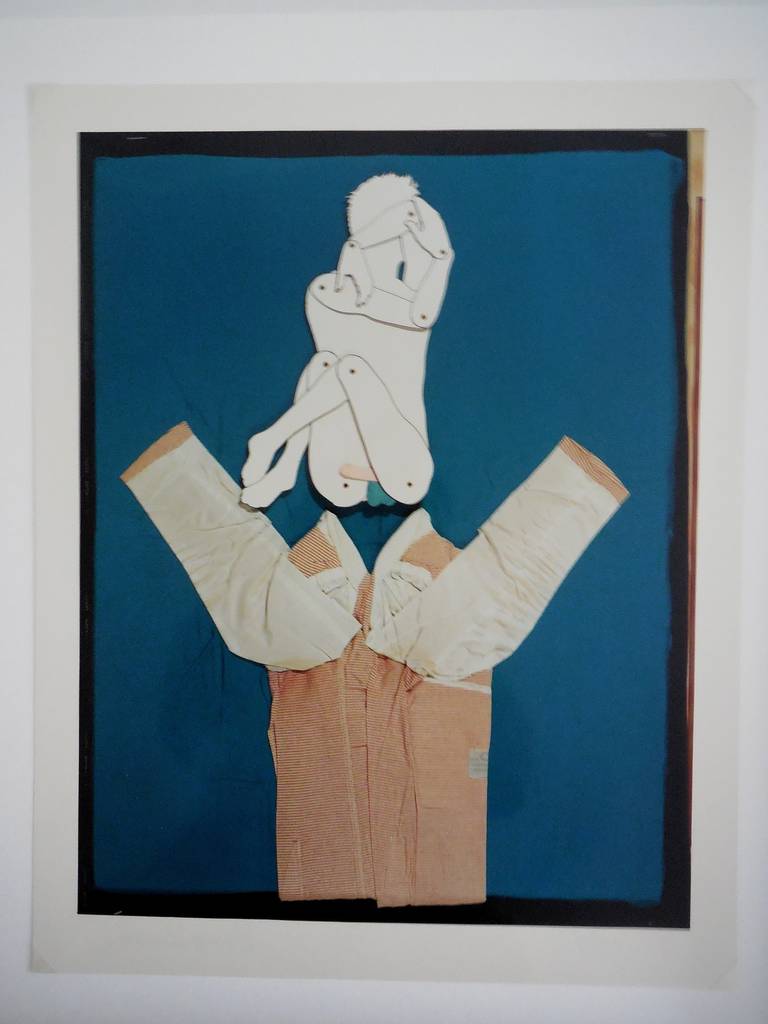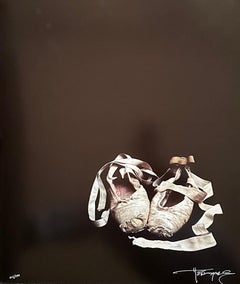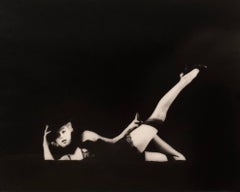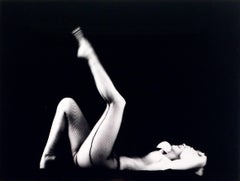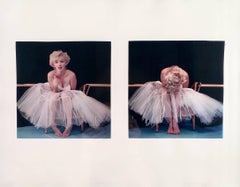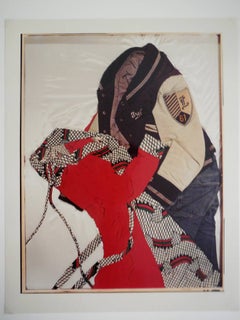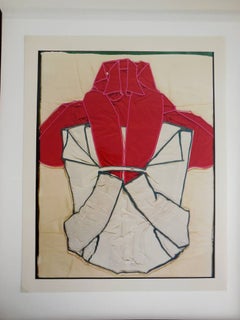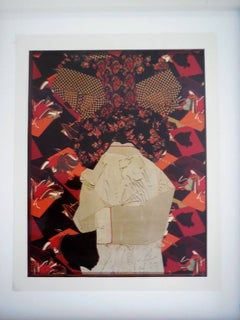Items Similar to Harvey Edwards, Leg Warmers, hand signed print
Want more images or videos?
Request additional images or videos from the seller
1 of 7
Harvey EdwardsHarvey Edwards, Leg Warmers, hand signed print1978
1978
$3,600
$4,50020% Off
£2,722.46
£3,403.0820% Off
€3,118.42
€3,898.0320% Off
CA$5,044.47
CA$6,305.5820% Off
A$5,506.86
A$6,883.5720% Off
CHF 2,899.43
CHF 3,624.2920% Off
MX$65,965.77
MX$82,457.2120% Off
NOK 37,082.64
NOK 46,353.2920% Off
SEK 33,857.06
SEK 42,321.3320% Off
DKK 23,295.35
DKK 29,119.1920% Off
About the Item
Harvey Edwards
Leg Warmers
Oversized dye bleach print (Cibachrome print)
1978, printed in 1981
Hand signed in ink by the artist
Numbered 103/299 from the edition of 299
Sheet: 39.5 x 29.75 inches
Image: 36 x 29 inches
In the early 1980s, Harvey Edwards worked with the Circle Gallery on a limited edition of Cibachrome prints. It was a proposed edition of 299, but only 50 were printed. 48 were sold at the time, and edition number 50 remains with the Edwards family.
*UNFRAMED*
- Creator:Harvey Edwards (1946, American)
- Creation Year:1978
- Dimensions:Height: 39 in (99.06 cm)Width: 29.5 in (74.93 cm)
- Medium:
- Movement & Style:
- Period:
- Condition:
- Gallery Location:Chatsworth, CA
- Reference Number:1stDibs: LU561314287222
About the Seller
5.0
Gold Seller
Premium sellers maintaining a 4.3+ rating and 24-hour response times
Established in 1975
1stDibs seller since 2017
322 sales on 1stDibs
Typical response time: 1 hour
- ShippingRetrieving quote...Shipping from: Chatsworth, CA
- Return Policy
More From This Seller
View AllHarvey Edwards, Ballet Slippers, Hand signed
By Harvey Edwards
Located in Chatsworth, CA
Harvey Edwards
Ballet Slippers
1979
Hand signed by the artist
Silver dye bleach print (Cibachrome)
Numbered 105/299
*unframed*
Category
1970s Contemporary Color Photography
Materials
C Print
$1,000 Sale Price
20% Off
Leg Up from The Black Sitting
By Milton Greene
Located in Chatsworth, CA
This piece is an original photograph printed from the original negative by Milton Greene, created in 1956. This photograph depicts Hollywood Icon Marilyn Monroe, who was a close friend and business partner of the artist. This piece is a part of Greene's series entitled "The Black Sitting...
Category
1950s Other Art Style Figurative Photography
Materials
Photographic Paper
Milton Greene, "Fishnet Stockings" from The Black Sitting, photograph
By Milton Greene
Located in Chatsworth, CA
This piece is an original photograph printed from the original negative by Milton Greene, 1956. This photograph depicts Hollywood Icon, Marilyn Monroe, who was a close friend and business partner of the artist. This piece is a part of Greene's "The Black Sitting...
Category
1950s Other Art Style Figurative Photography
Materials
Photographic Paper
Milton Greene, "Ballet Diptych, " original photograph from the original negative
By Milton Greene
Located in Chatsworth, CA
This piece is a diptych consisting of two original dye-transfer photographs from the original negatives by Milton Greene, shot in 1954 and published in 1978. These photographs depic...
Category
1950s Modern Portrait Photography
Materials
Photographic Paper
Reclining Leg Crossed from The Black Sitting
By Milton Greene
Located in Chatsworth, CA
This piece is an original photograph printed from the original negative by Milton Greene, created in 1956. This photograph depicts Hollywood Icon Marilyn Monroe, who was a close friend and business partner of the artist. This piece is a part of Greene's series entitled "The Black Sitting...
Category
1950s Other Art Style Figurative Photography
Materials
Photographic Paper
Bert Stern, "Avant Garde", serigraph, hand signed
By Bert Stern
Located in Chatsworth, CA
Bert Stern
Gravure lithograph and serigraph
Created by Bert Stern for the 1968 cover of the art magazine, "Avant Garde".
Depicts Marilyn Monroe and is hand signed, dated and titled...
Category
1960s Modern Portrait Photography
Materials
Lithograph, Screen
You May Also Like
Rare Harry Bowers Vintage C Print Photograph From Ten Photographs Fashion Photo
By Harry Bowers
Located in Surfside, FL
HARRY BOWERS
T E N P H O T O G R A P H S
I DON'T LOOK FOR PHOTOGRAPHS I INVENT THEM
I recall my first meeting with Harry Bowers in California a few years ago. As he produc...
Category
1980s Photography
Materials
Photographic Paper
Seasons 1981 Photo Color Copier Print Photograph Museum Collected Art Xerography
By Leslie Schiff
Located in Surfside, FL
SEASONS (1981)
This is for the single print listed here. (not the outside folder or title sheet)
Title: Beachball. This one is hand signed and dated verso.
Seasons explores the seasons of Man, Woman, Child, Civilization, Nature and Technology. First digital artwork purchased by the Metropolitan Museum.
Date: 1980-1981
Medium: vintage color photocopy print.
“I worked at The Metropolitan Museum in 1981, when they acquired [Lesley’s] SEASONS portfolio.
We knew we wanted it, even though we didn’t have a category for it.” David Kiehl, Curator of Prints and Special Collections The Whitney Museum of American Art, New York City.
Lesley Schiff (born 1951) is an American fine artist. Schiff studied painting at the Art Institute Chicago before developing her signature practice using color laser printers to create images. Her work is included in the collections of the Whitney Museum of American Art, the Mead Art Museum and the Metropolitan Museum of Art and other major museums, corporate and private collections globally. Lesley Schiff revolutionized the photocopier from being an office tool to just another instrument in the artist's arsenal. Rather than addressing the tool in her work, Schiff instead uses the photocopier like a paintbrush to realize her vision. Once a painter, Schiff says: “I never intended to stop painting. I just decided to start painting with a modern tool. Working with the color laser printer keeps you in your culture. It's like America. Plugged in. Electronic. Direct." Painting with light, Schiff's body of work outlines a cycle of life: man, woman, child, civilization, nature, technology. More recent works challenge the viewer to understand the concept of eye-levels and perspectives, reinventing the way we see. Schiff's work was the Metropolitan Museum of Art's first digital acquisition, and most recently, was featured at the Whitney Museum of American Art in "Experiments in Electrostatics".
She uses a color laser printer “like a paintbrush” to create her art. She has said about her work and her tool: “I never intended to stop painting. I just decided to start painting with a modern tool. Working with the color laser printer keeps you in your culture. It's like America. Plugged in. Electronic. Direct—but no matter how hi-tech my tools become, I’m a painter, but instead of painting with oils, I paint with light.
The Whitney Museum will show Lesley Schiff's pioneering SEASONS portfolio in its entirety. Many prominent collections acquired SEASONS as their first digital artwork.
She participated in the Punk Art show in the 1970's. Her work kind of relates to Fluxus and Dada.
Leslie Schiff moved from Chicago to New York in the early 1970s. Much of her art involves collage and the Xerox photocopy machine. Her images are rooted in her personal psyche and have an intuitive meaning that is not always easily understood. In exhibitions, Xerox sheets are combined and displayed decoratively on the wall. Schiff has also created books; and made video and sound tapes. She was included in the seminal New York/New Wave 1981 exhibition show at MoMA PS1 along with Jean-Michel Basquiat, William S.Burroughs, David Byrne, Larry Clark, Crash (John Matos), Ronnie Cutrone, Brian Eno, Nan Goldin, Keith Haring, Ray Johnson, Joseph Kosuth, Robert Mapplethorpe, Kenny Scharf, Steven Sprouse, Andy Warhol and Lawrence Weiner.
She did a “visual biography,” comprised of portraits of Bob Dylan—depicted at different ages, from his 20s to his 60s—illustrations of his lyrics, and images of iconic objects like his sunglasses and harmonica. Schiff collaborated with Matthew Carter...
Category
1980s Contemporary Color Photography
Materials
Color
Large Harry Bowers Vintage C Print Photograph From Ten Photographs Fashion Photo
By Harry Bowers
Located in Surfside, FL
HARRY BOWERS
T E N P H O T O G R A P H S
I DON'T LOOK FOR PHOTOGRAPHS I INVENT THEM
I recall my first meeting with Harry Bowers in California a few years ago. As he produc...
Category
1980s Photography
Materials
Photographic Paper
Rare Harry Bowers Vintage C Print Photograph From Ten Photographs Fashion Shot
By Harry Bowers
Located in Surfside, FL
HARRY BOWERS
T E N P H O T O G R A P H S
I DON'T LOOK FOR PHOTOGRAPHS I INVENT THEM
I recall my first meeting with Harry Bowers in California a few years ago. As he produc...
Category
1980s 85 New Wave Photography
Materials
C Print
Large Harry Bowers Vintage C Print Photograph From Ten Photographs Fashion Photo
By Harry Bowers
Located in Surfside, FL
HARRY BOWERS
T E N P H O T O G R A P H S
I DON'T LOOK FOR PHOTOGRAPHS I INVENT THEM
I recall my first meeting with Harry Bowers in California a few years ago. As he produc...
Category
1980s Arte Povera Photography
Materials
Photographic Paper, C Print
Rare Harry Bowers Vintage C Print Photograph From Ten Photographs Fashion Photo
By Harry Bowers
Located in Surfside, FL
HARRY BOWERS
T E N P H O T O G R A P H S
I DON'T LOOK FOR PHOTOGRAPHS I INVENT THEM
I recall my first meeting with Harry Bowers in California a few years ago. As he produc...
Category
1980s Photography
Materials
Photographic Paper
